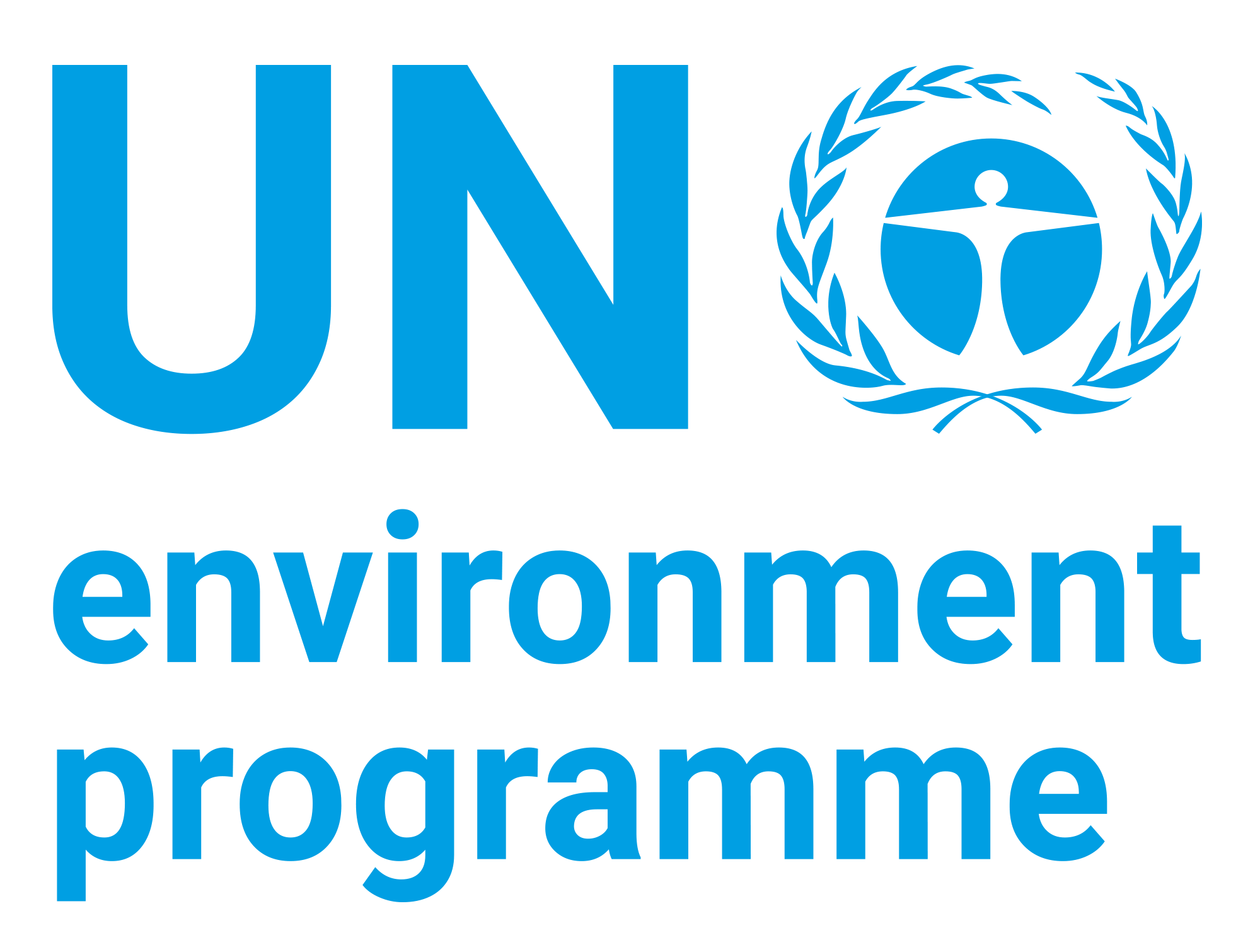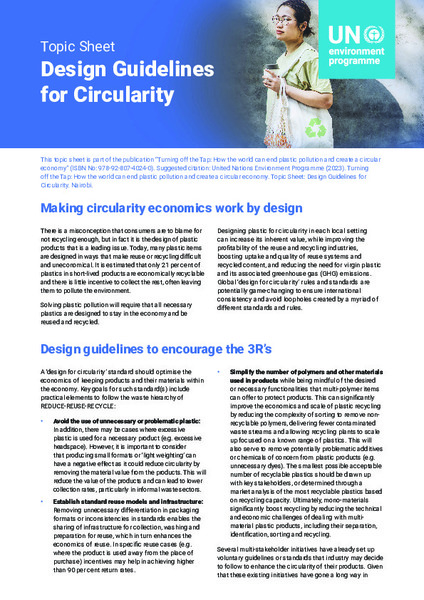| dc.contributor | Industry and Economy Division | en_US |
| dc.contributor.author | United Nations Environment Programme | en_US |
| dc.date.accessioned | 2023-04-20T21:25:54Z | |
| dc.date.available | 2023-04-20T21:25:54Z | |
| dc.date.issued | 2023-05 | |
| dc.identifier.uri | https://wedocs.unep.org/20.500.11822/42233 | |
| dc.description | Solving plastic pollution will require that all necessary plastics are designed to stay in the economy and be reused and recycled. Designing plastic for circularity in each local setting can increase its inherent value, while improving the profitability of the reuse and recycling industries, boosting uptake and quality of reuse systems and recycled content, and reducing the need for virgin plastic and its associated greenhouse gas (GHG) emissions. Global ‘design for circularity’ rules and standards are potentially game-changing to ensure international consistency and avoid loopholes created by a myriad of different standards and rules. | en_US |
| dc.format | pdf | en_US |
| dc.language | English | en_US |
| dc.relation.ispartof | Turning off the Tap: How the World can End Plastic Pollution and Create a Circular Economy | |
| dc.rights | Public | en_US |
| dc.subject | plastic product | en_US |
| dc.subject | circular economy | en_US |
| dc.subject | reuse of material | en_US |
| dc.subject | plastic waste | en_US |
| dc.subject | packaging waste | en_US |
| dc.title | Topic Sheet: Design Guidelines for Circularity | en_US |
| wd.identifier.sdg | SDG 3 - Good Health and Well-Being | en_US |
| wd.identifier.sdg | SDG 12 - Responsible Consumption and Production | en_US |
| wd.topics | Chemicals and Pollution Action | en_US |
| wd.topics | Finance and Economic Transformations | en_US |
| wd.identifier.pagesnumber | 3 p. | en_US |


